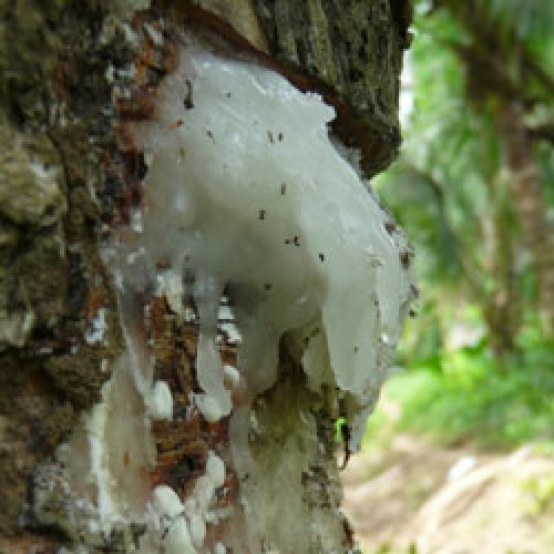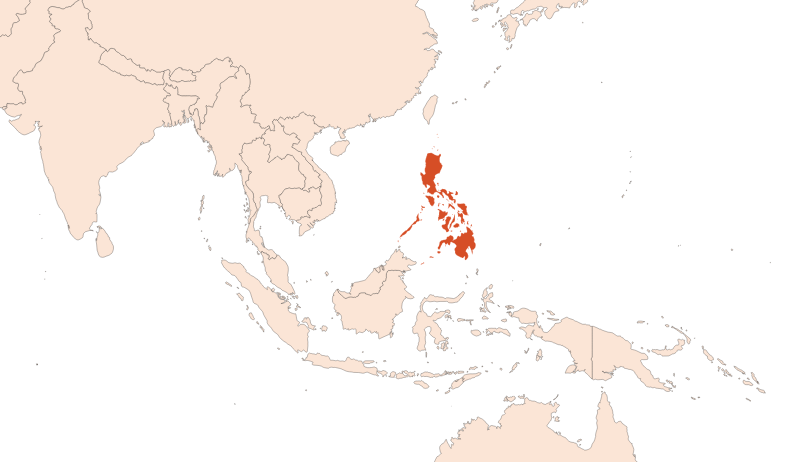Elemi EO
Naturelle
Spicy > Cool Spices > Incense > Zesty > Citric

Crédits photo: ScenTree SAS
Latin name :
Canarium luzonicum var. (Blume) A. Gray
Botanical profile :
Elemi is a 30m high tree belonging to the Burseraceae family (such as incense or myrrh) and of the genus Canarium.
Geographic origin :
The Canarium luzonicum is a tree occuring exclusively wild (rarely in cultivation) in the Phillipines islands. Its an endemic species
Chemotypes :
Other elemis are known although they are much less commonly (or not) used in perfumery:
Canarium ovatum : also native to the Philippine archipelago.
Canarium muelleri or scrub turpentine of Queensland, native to Australia.
Canarium Bengalense or elemi of Bengal and China, whose essential oil contains a high dose of Beta-Caryophyllene.
Canarium schweinfurthii or elemi of Cameroon and Guinea.
Canarium madagascariensis : originally from Madagascar and also called ''ramy ''.
Canarium ovatum : also native to the Philippine archipelago.
Canarium muelleri or scrub turpentine of Queensland, native to Australia.
Canarium Bengalense or elemi of Bengal and China, whose essential oil contains a high dose of Beta-Caryophyllene.
Canarium schweinfurthii or elemi of Cameroon and Guinea.
Canarium madagascariensis : originally from Madagascar and also called ''ramy ''.
Extraction process :
Like incense or myrrh, the resin is obtained using the ''tapping '' technique, i.e. by making an incision through the tree's bark. This incision, which is generally made once a day during the week prior to the harvest, causes the exudation of a white resin. A single tree can yield up to 5kg of resin annually for a harvest carried out from July to March.
All the resin recovered is stored in a warehouse while waiting to be extracted.
Several types of extraction can be performed with this resin:
Steam extraction: Usually performed in Europe to obtain the Elemi EO. It takes in general 5.5kg of resin to obtain 1kg of essential oil - Yield of 18 %.
SFE extraction: Usually done in Europe, this process allows to obtain Elemi SFE. This low-temperature technique gives a smell very similar to the natural product.
Volatile solvent extraction: Usually carried out with Acetone, this process allows to obtain Elemi Resinoid.
All the resin recovered is stored in a warehouse while waiting to be extracted.
Several types of extraction can be performed with this resin:
Steam extraction: Usually performed in Europe to obtain the Elemi EO. It takes in general 5.5kg of resin to obtain 1kg of essential oil - Yield of 18 %.
SFE extraction: Usually done in Europe, this process allows to obtain Elemi SFE. This low-temperature technique gives a smell very similar to the natural product.
Volatile solvent extraction: Usually carried out with Acetone, this process allows to obtain Elemi Resinoid.
Major Components :
D-Limonene (40 - 72%)
Alpha-phellandrene(10 - 24%)
Sabinene (3 - 8%)
Alpha-Terpineol (0,4 - 3%)
Elemol (1 - 25%)
Elemicine (0,5- 8%)
Alpha-phellandrene(10 - 24%)
Sabinene (3 - 8%)
Alpha-Terpineol (0,4 - 3%)
Elemol (1 - 25%)
Elemicine (0,5- 8%)
- Uses in perfumery :
- Used in all types of perfumery for fougere, eaux fraîches, coniferous, spicy and amber notes.
Interesting to replace Frankincense EO or Pink Peppercorn EO, because it is less expensive. - Other comments :
- The elemi is the main source of natural elemol.
- Volatility :
- Head
- Appearance :
- Colorless to pale yellow liquid
- Stability :
- Solubility issues in perfumes
Limonene tends to convert into Carvone through time, and to give a minthy note to the oil
The terpenes identified in this raw material can polymerize when they are oxidized - Price Range :
- €€
- Aromatherapy :
Informations provided below are taken from reference works in aromatherapy. They are given for information purposes only and can not constitute medical information, nor engage the responsibility of ScenTree.
The Elemi EO intervenes in case of nervous, cutaneous, digestive and respiratory atony (wounds). It also has healing virtues.

Crédits photo: ScenTree SAS
- EINECS number :
- 97675-63-3
- FEMA number :
- 2408
- Allergens :
- D-Limonene
- IFRA :
- This ingredient is restricted by IFRA
- Annexe I :
- Some regulated synthetic ingredients are found in nature and in certain proportions in natural ingredients. This presence in nature has to be taken into account when calculating limits of use recommended by the IFRA. In case you do not know these concentrations, you can use the ones estimated by the IFRA. Here they are :
- Annexe I :
- Some regulated synthetic ingredients are found in nature and in certain proportions in natural ingredients. This presence in nature has to be taken into account when calculating limits of use recommended by the IFRA. In case you do not know these concentrations, you can use the ones estimated by the IFRA. Here they are :
| List of regulated compounds contained in this ingredient | ||
|---|---|---|
| Regulated ingredient name | CAS N° | Estimated Concentration |
| Methyl eugenol | 93-15-2 | 0,4 |
| List of regulated compounds contained in this ingredient | ||
|---|---|---|
| Regulated ingredient name | CAS N° | Estimated Concentration |
| Methyl eugenol | 93-15-2 | 0,4 |
To learn more about IFRA's standards : https://ifrafragrance.org/safe-use/library
ScenTree is solely responsible for the information provided here.




